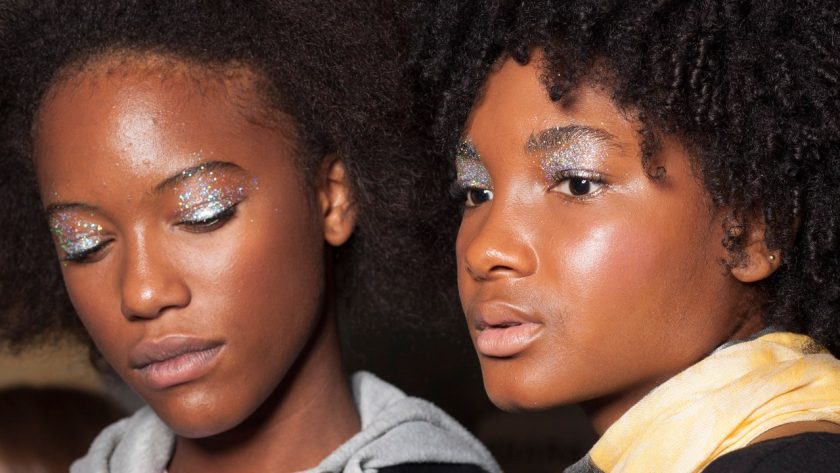“The EU’s new mandate is a push in the right direction as we move towards a more sustainable and environmentally conscious industry,” says makeup artist Danessa Myricks, who is also the founder of her eponymous makeup line, well-known for its ultra-shimmery palettes. “Ultimately, this new mandate will require brands to be more innovative, especially as it pertains to ingredients used in cosmetics.” And, according to Myricks, her brand, which operates both in the US and EU, has already found more sustainable formulations to create glitzy makeup products—sans plastic.
“(We) have taken a more modern approach to our product assortment that includes an array of hyper-reflective, multidimensional shiny finishes without glitter—giving our community the tools to freely explore their artistry,” she explains. Replacement options include plant-based plastics and synthetic mica.
Knight takes a similar stance, adding that while the mandate may come as a shock to some, there’s plenty of time to adapt.
“The purpose of this EU restriction on microplastics such as plastic glitter—unless biodegradable or soluble—is to encourage several industries, including the cosmetic industry, to move towards more environmentally favorable options,” says Knight. “As a business committed to sustainability, we welcome any regulation that is going to positively impact the environment. Although we love sparkles, we’ve been looking at other ways to incorporate them without the use of harmful loose glitter for years.”
How will the wider industry adapt while also keeping consumers happy?
Having to swap formulations based on the market you’re selling to isn’t exactly anything new—especially when it comes to Europe and the US.
The EU has long had a list of banned substances that cannot be used in cosmetic products being sold in the region, while the US does not follow the same rules. However, Dr. Swei notes that for traditional glitter in particular, adapting formulas to local restrictions can be a lengthy process.
“It is costly and adds complexity to support multiple formulations for different countries,” he shares. “This type of harmonization can take years or even decades to fully implement as supply chains need to be realigned and regional reformulations compete with other business priorities.” But he’s noticing that more and more cosmetic lines, like Myricks’s and Knight’s brands, are already ahead of the curve. “Pigments and flakes can have similar aesthetic performance and don’t contribute to microplastic litter,” he adds.
In addition, glitter made from plant-based cellulose or starch are both viable options, as they’re both completely biodegradable yet create the same finish—so you won’t notice a difference in terms of shimmer payoff. The only distinction is “(they) start the degradation process once interacting with the environment,” explains Knight.
For those who may be a bit resistant to change, Myricks has no doubt that regardless of where you live, these new regulations won’t compromise quality—and her namesake collection is a perfect example of just that.
“I am a firm believer that regulatory mandates can inspire positive change in cosmetics,” she says. “(We can still) maintain artistic freedom while upholding health and safety integrity.”
And for the environmentally savvy consumer who prides themselves on being a conscious shopper, the EWG offers a tool to help you scope out a brand’s ingredient list before you make a purchase. “(Our) Skin Deep database provides a free and easy way to find cosmetics without PET microplastic glitters,” says Dr. Swei. “Just search your favorites, and look for green-scoring products and the absence of PET, or polyethylene terephthalate, in the ingredient list.”



